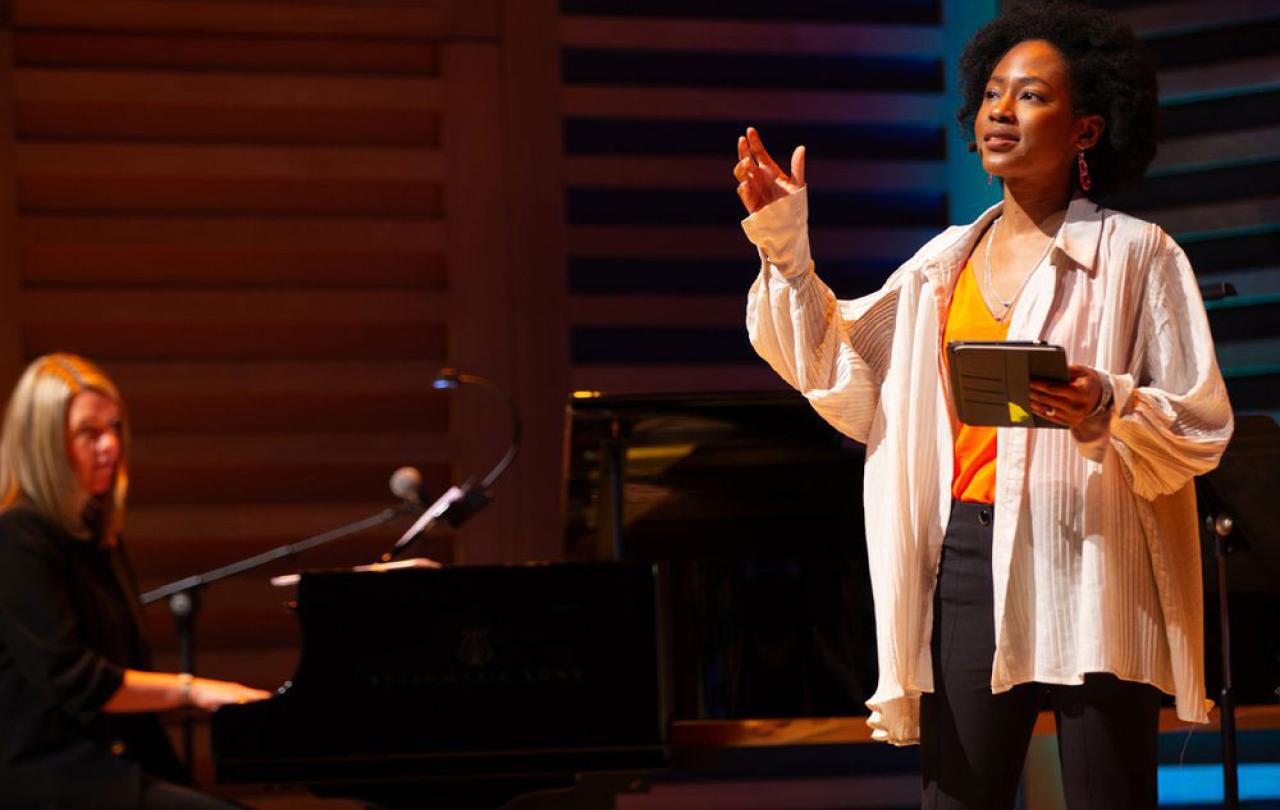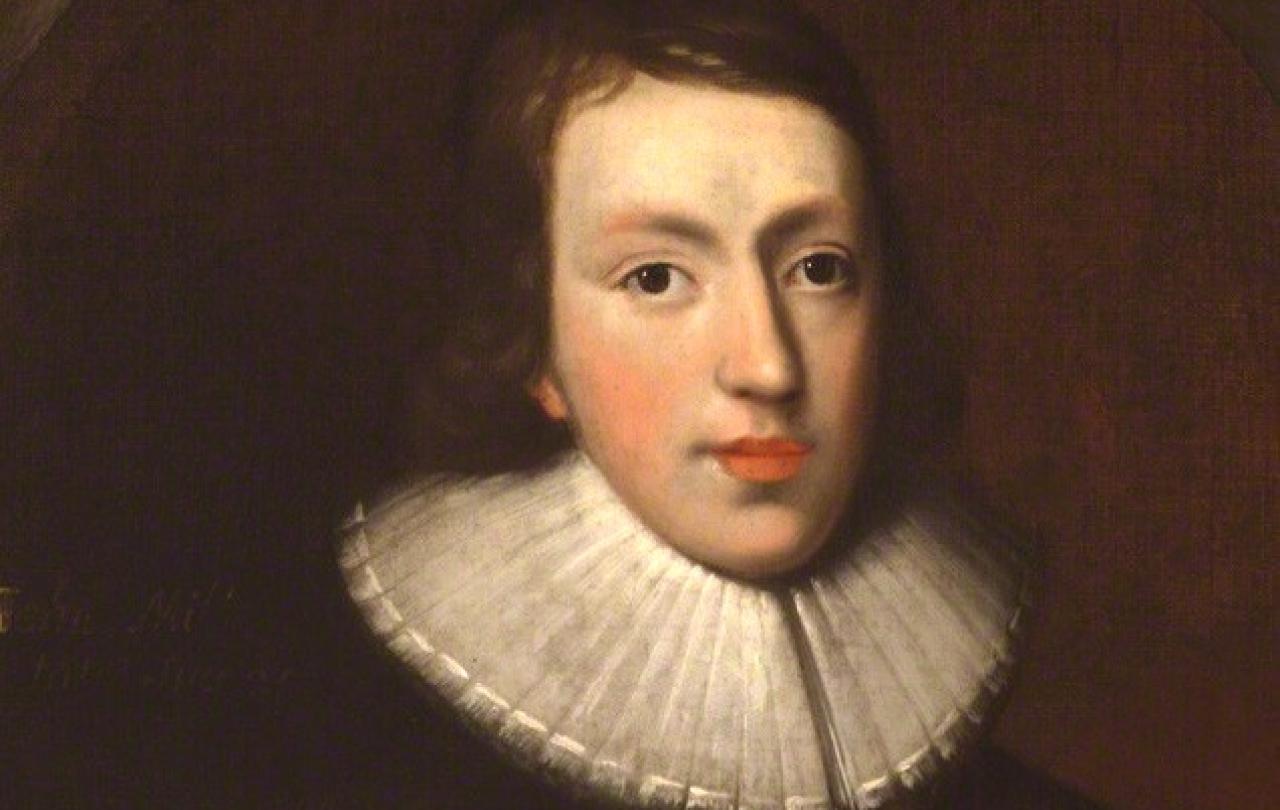
There are poems such as T.S. Eliot's ‘Journey of the Magi’ and U.A. Fanthorpe's ‘BC – AD’ which have become staples of Christmas Carol services. Last Christmas, for the first time, I used Theresa Lola's ‘Look at the Revival’ as the poem in our Carol Service that explored the experience of the Magi in seeking and finding Jesus.
‘Look at the Revival’ was commissioned by National Gallery in 2020 in response to ‘The Adoration of Kings’ painting by Jan Gossaert. The poem is written in the voice of Balthazar, the Black King in the painting, and explores the painting’s themes of rupture, transformation and renewal. It ends with this reflection:
My job often feels like a hefty stone
But today I am powered by a fierce awe.
I say to the stunned people let us look deeply
to know this hope deeply.
British Nigerian poet and former Young People’s Laureate for London, Lola is the British equivalent of Amanda Gorman, whose poem ‘The Hill We Climb’ made such an impact at US President Joe Biden's inauguration. Lola said after that event that “To have poetry make national headlines … was just so exciting” and to have Gorman’s poem articulate everyone’s feelings “was just the perfect example of what poetry can do”.
There is a real art to writing poetry for public occasions where depth and immediacy need to intertwine. It is an art that Lola herself has mastered, as was demonstrated when she was commissioned by the Mayor of London’s Office to write and read a poem - ‘For Those Who Listen When Courage Calls’ - at the unveiling of Millicent Fawcett’s statue in Parliament Square.
Lola was joint-winner in 2018 of the Brunel International African Poetry Prize and was featured in the 2019 ‘Forces for Change’ issue of British Vogue as a next generation talent. Other commissions for her work, which explores themes of self-discovery, transformation, cultural heritage, and belonging, have included Selfridges, Rimowa, Royal Festival Hall, and Audible. She is currently leading the Volunteer Interpreter Programme at Dulwich Picture Gallery where, in a programme inspired by their Soulscapes exhibition, she is exploring how poetry can be used to interpret their collection.
“This poet speaks boldly of prayer as a call to arms for family, for love, for a survival, which as she concludes in the final poem, ‘Psalm 151’, ‘I prayed my fists into’”
Her debut poetry collection ‘In Search of Equilibrium’, which was hailed as “powerful and rigorous”, is an extraordinary, and exacting study of death and grieving. The reviews of this collection have much to say about the well springs of her work.
In this collection, as S. Niroshini writes, she “deftly deploys form, texture, and shape to interrogate the meaning of death and the suffering of family” with poems “variously presented as computer coding, live reportage, prayers, algorithms, Wikipedia entries and hip-hop lyrics”. While its subject matter is, as Carmina Masoliver notes, “essentially natural – life and death”, the poems themselves are often experimental and “bring in cultural elements … as well as religious allusions”. Charlie Hill explains that “This superb debut collection revolves around the death of the poet’s grandfather, whose Alzheimer’s resulted in a ‘four-year funeral’”. Laurie Smith suggests “It is rare for a debut collection by a young poet to be so death-haunted, but it is death-haunted in the same sense as [Sylvia] Plath’s ‘Ariel’ and [Anne] Sexton’s ‘To Bedlam and Part Way Back’.” He writes that “The comparison isn’t fanciful” as “Lola’s writing has a similar vividness and strength”.
Masoliver notes that “The collection is book-ended with Lola’s own prayer and psalm”. “From the first,” she suggests, “there is an expression of doubt about the poet’s faith, though holding onto it ‘even when I fear God might be a thin shadow’”. Yet, “By the time we get to the final poem, there is a loss of innocence to the reality of the world around us, but a certain strength that comes with ‘fighting darkness’”. Niroshini states that “This poet speaks boldly of prayer as a call to arms for family, for love, for a survival, which as she concludes in the final poem, ‘Psalm 151’, ‘I prayed my fists into’”.
Lola has said that “The writing of the collection was emotionally challenging as the poems touch on sensitive topics about death, faith, family and mental health.” For her, “writing poetry has been a ‘therapeutic tool’, a ‘healthy listening ear’ and a way to express her struggles, be they anxiety or … grief”. Nevertheless, she also says: “My poems always suggest and show hope no matter how gritty the subject is! I do write poems that are centred around my faith, and that hope in my faith is Jesus”.
Many reviewers note Lola’s ability to write lines, such as ‘sweeping me off my bones’, “that stop you dead”. Hannah Williams was particularly moved by lines from ‘Blessed Are the Mothers of a Dead Child’:
Blessed are the mothers of a dead child
for they manage to recover
after eating the fruit that grows
from planting your child’s casket in the ground.
Hill cites the final lines of the same poem:
My grandmother tries to celebrate the brief beauty of his breath.
She says what use is sweeping grief under the carpet
when you can blend it to find the drop of sanity that will flow from it.
to suggest that it is here that the equilibrium sought in the collection’s title is to be found.
The Sunday Times Style Magazine has described Lola as being among “the ranks of an exciting new wave of young female bards who are widening the appeal of poetry for a new generation”. As a result, the imminent prospect of a second collection from her is a particularly exciting prospect. Look out later in the year, then, for ‘Ceremony for the Nameless’ which is described as exploring the act of naming and its role in shaping our identities, our aspirations, what we carry and how we belong. In lyrical, joyful and moving poems, Lola will explore the ways our journey through life might require us to cast off old expectations – both others’ and our own – just as at other times it can bring us back, strangely and unexpectedly, to where we first began.
This returns us to Balthazar and his journey of discovery. So, as he states: “let us look deeply / to know this hope deeply.”





